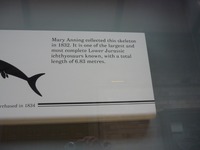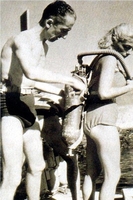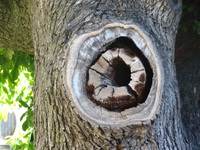Items
Site
The Medicine Chest
keywords is exactly
absence
-

Isigubu through Gqom
"In 2018, the Zulu drum alleged to have been played during the 1906 Bambatha rebellion against British rule and unfair taxation in the colony of Natal (discussed by Nixon) became the focus of Amogelang Maledu’s Honours research project. In ‘Isigubu through gqom: The sound of defiance and Black joy’, Maledu (who has an undergraduate degree in Anthropology and Visual Culture) used the drum’s history of colonial resistance and contextualised it through the contemporary musical genre of gqom, showing music as both an act and celebration of joy and freedom and of defiance against the limitations of township life. Through her ‘speculative and imagined interconnectedness’ of the isigubu and gqom, Maledu appropriated the limited information available about the former and expanded it by reinventing new historical pathways that reframed colonial narrations and aesthetics (Maledu 2018: 29–30). Her curation broke the silence of the Kirby instruments and liberated the isigubu from its ethnomusicological framework through a juxtaposition that spoke back to history and the contemporary moment. In addition, a website provides a framework for historicising gqom and encouraged the growth of its archive through viewer engagement, also highlighting the speculative and stagnant colonial archive in which the isigubu is situated (Maledu 2018: 29–30)" (Liebenberg 2021: 211 - 212). -

A label in the Natural History Museum
A label in the Natural History Museum accompanying a discovery made by Mary Anning. -

Unveiling
A bronze bell with lead clapper. The artist Janine Antoni, asked about this work, stated that she "was thinking of an object that is simultaneously hiding and calling out". -

Kuhn's Jellyfish
Kuhn's "example illustrates how the entrenched expectations of experimental outcomes and prescribed instrumental functions of an insider’s view of the laboratory and its equipment can pose a threat to new discoveries. The circumstances that enabled Roentgen (an insider) to first notice these new rays are not clear, but Kuhn proposes that the occurrence of anomaly enables discovery and that Roentgen’s ‘recognition that nature has somehow violated the paradigm-induced expectations that govern normal science’ (1970: 52–3) was important. Kuhn emphasises that Roentgen valued the anomaly instead of ignoring it – a vital step in the process of discovery" (Liebenberg 2021: 114). -

Melchior & Cousteau
In 1963 Simone Melchior became the world's first female aquanaut by living in Starfish House, an underwater habitat, for the final four days of the Conshelf II project. Although never visible in the 'Undersea World of Jacques Cousteau' series, Cousteau's wife and business partner played a key role in the operation at sea. She was the acting mother, healer, nurse and psychiatrist to the all-male crew for 40 years. Cousteau describes her as being "happiest out of camera range, in the crow’s nest of the Calypso (...), scanning the sea for whales". Her father, Henri Melchior, was director of Air Liquide (France’s main producer of industrial gases at the time) and funded the invention of the aqua lung and the scuba diving apparatus we know today. -

Ma
The Japanese have a word, ‘ma’, for this interval which gives shape to the whole – this ‘gap’, ‘opening’, ‘space between’ or ‘time between’. Ma is not something that is created by compositional elements, rather it can be understood as the thing that takes place in the imagination of the human who experiences these elements. A room, for example, is called 'ma', as it refers to the space between the walls. Or a rest in music, which indicates a pause between the notes or sounds (Pilgrim 1986: 255). -

H.4
This object, a leather cartridge case said to belong to Sammy Marks, occupies a place in the Special Collections of the University of Cape Town. It forms part of the Sammy Marks Papers (BC770). -

Sharpeville
The predominantly black community of Sharpeville was established near Vereeniging. On the 21st of March, 68 years after Vereeniging was first established, the Sharpeville massacre occurred. -

Where their lives took on true weight
In Alice Munro's short story 'Post and Beam', the two protagonists return home from a short vacation: "Up Capilano Road, into their own part of the city and their own corner of the world, where their lives took on true weight and their actions took on consequences. There were the uncompromising wooden walls of their house, showing through the trees" (Munro 2001: 212). -

House
Lokrete with metal armature Grove Road, London, E3 (Destroyed 11 January 1994) -

Cecil John Rhodes statue
The man who consolidated thousands of small diggings in Kimberley to found De Beers Consolidated Mines was Cecil Rhodes, who then used the profits to extend into gold mining in and around Johannesburg. -

Pompei casts
-

Burrowing
Extract from 'A Child in Time': "Later, in the sorry months and years, Stephen was to make efforts to re-enter this moment, to burrow his way back through the folds between the events, crawl between the covers, and reverse his decision. But time – not necessarily as it is, for who knows that, but as thought constituted it – monomanically forbids second chances" (McEwan 1987: 14). -

Hamish Email
An email between artist-curator and Dr Hamish Robertson. Robertson was invited to Hiddingh campus in his capacity as entomologist (and then Director Natural History Collections at Iziko Museums of South Africa) to assess the environment in terms of biodiversity prior to the staging of the 'Where the Wild Things Are' exhibition. -

Lacuna (Part one)
"It is interesting to note that the botanical origins of most of these medicines were from outside of Africa, especially if one considers the long history of the Cape as a point on the trade routes where ill sailors regularly disembarked and drew on the knowledge of the Khoekhoe traditional healers for treatment and herbal cures (Laidler & Gelfand 1971: 44). The Cape flora offered a plenitude of medicinal resources and these healers (who were skilled in botany, surgery and medicine) used them in a variety of healing practices . The exclusion of local botanical remedies in the BWC No. 254 medicine chest can be attributed to many factors" (Liebenberg 2021: 67). -

Lacuna (Part two)
An ill English Oak on Hiddingh Campus, Michaelis School of Fine Art, University of Cape Town. English oaks were first brought into the country by the early settlers and were one of the first exotic tree species to be planted in South Africa, shortly after Van Riebeek’s arrival in 1652. He explained that in South Africa, these trees do not grow as old as they would have in Europe. The high temperatures cause these trees to grow faster than their species back home, and because of this, their centers start rotting over an extended period of time. The center part of the wood – the heart – is affected by this occurrence and hollowed out over time. -

"Bought fresh in streets of Cape Town"
"The flower sellers trading in Trafalgar Place and along Adderley Street have been doing so since at least the mid-1880s but became viewed as threats to the local flora by the European settlers at about the same time the medicine chest was first introduced to the city at the beginning of the 20th century. The settlers initially preferred to cultivate plants imported from their home countries to indigenous varieties, introducing many species to South Africa for nostalgic or practical reasons (subsequently problematic for local biodiversity) (Van Sittert 2002: 103). In the wake of the emerging nationalism of the white settlers in the 1890s, interest in indigenous plants gained momentum and was deployed to create a sense of belonging to the ‘foreign’ land (Boehi 2013: 133). A botanical discourse was mobilised to underscore ideas about identity and belonging, such as ‘roots’ and ‘ideas of rootedness’, and laws regulating flower picking (which usually occurred on the mountain) were passed in this period and were secured by the Wild Flower Protections Act in 1905 and an amendment thereto in 1908 (Boehi 2013: 133)" (Liebenberg 2021: 275). This is a label on a botanical specimen (K000225239) found in the Royal Botanic Gardens of Kew that was donated to the Gardens by UCT. Described in pen in the notes section, the specimen is of the local Erica latiflora and was collected in 1908, when it was ‘bought fresh in the streets of Cape Town’. The insider details noted on this specimen reveal much to outsiders such as Boehi (2013) and Van Sittert (2010) – scholars who have written about the colonial history of botany in the Cape and the unofficial presence of the flower sellers in the provenance of many specimens from the Cape kept in international herbaria. -

"Bought fresh in streets of Cape Town"
Royal Botanic Gardens, Kew (K). Herbarium: Royal Botanic Gardens, Kew (K), K000225239. Collection: Herbarium Specimens. Resource Type: Specimens. Collector: unknown, #14027. Collection Date:11–1908. Locality: Bought fresh in streets of Cape Town. Country: South Africa (South Africa). Identifications: Type of Erica latiflora L.Bolus [family ERICACEAE] (stored under name). Notes: Herbarium Africanum Bolusianum Flora South Western Region -

What UCT is not telling its first years
On the 19th of January 2015, an article appeared in the Cape Argus titled 'What UCT is not telling its first years' written by Dr Siona O’Connell, a staff member of the Centre for Curating the Archive, and lecturer at the university. In it she wrote about the absence of transformation in the university, evident in its lack of black academic staff, describing the campus as "mired in unarticulated tensions and divisions, many of them pivoting on race” and “guarded by the Rhodes Memorial – a significant imperialist edifice” that continues to shadow it “in many overt and covert ways” "(O’Connell 2015). In the article she pinpoints that even though, as first years, they will most certainly be greeted by the statue of Cecil John Rhodes overlooking the rugby field during their tour of the campus, their chances of being taught by a black professor during the full span of their degree, will be incredibly slim… -

L’Ellipse
In the triple–screen projection 'L’Ellipse' (1998), Pierre Huyghe slowed a jump cut from Wim Wenders’s 1977 film 'The American Friend' and expanded it by adding his own footage of the film’s leading man, Bruno Ganz, now older, acting out a scene that the film itself skips – a walk across a city, from one apartment to another, between important phone calls.


